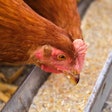Free and easy-to-use technology allows you to stay in front of your audience, promote your brand
While at first glance the sea of @s and #s may seem perplexing, Twitter offers a unique platform for keeping your mill connected with your customers and your community. Farmers are especially active on Twitter, so what better way for a feed mill to engage with its end users than to maintain a Twitter page.
Because I hate to make assumptions about social media, here is a quick Twitter overview and how it’s used: Twitter is a microblogging social network that limits user posts to 140-characters “tweets.” Tweets appear in a real-time newsfeed and, depending on how many other Twitter pages the user “follows,” these brief messages can get buried rather quickly. I’ll spare you further details and how-to instruction. I just want to make sure we’re on the same page.
Obviously, most businesses use their social networks to gain brand awareness, disseminate news, and promote their products. Feed mills are no exception. Here is list of best practices and examples of how feed mills are using Twitter to engage with their customers:
1) Promote products, services and special offers
Southern States Cooperative (@southernstates): “What are your horses' favorite feeds? Find out with our online Horse Feed Selector tool - bit.ly/1mrBqFZ" and “Have you checked out our latest savings on livestock supplies and feed? Take a look! http://bit.ly/1qyOIPF”
2) Draw attention to external communications and website
Hi Pro Feeds (@hiprofeeds): “Another post from our #Livestock #Nutrition blog "Are Your Livestock Getting What You Feed Them? https://www.hiprofeeds.com/nutrition/are-your-livestock-getting-what-you-feed-them”
3) Post employment opportunities
Nutreco Canada Careers (@NutrecoCanada): “We have a Production Operator opportunity at our Strathmore, AB location. If you are interested apply to http://www.landmarkfeeds.com by July 22nd"
4) Act as an opinion leader and news source by sharing (or retweeting) items pertinent to your industry
Retweeted by New Rosedale Feedmill (@newrosedalefeed):
“ONswineinfo @ONswineinfo · Feb 19 : CFIA Statement on Porcine Epidemic Diarrhea Virus in Feed #PED #PEDv #PEDvON #OntAg http://wp.me/p29bnu-hf “
5) Alert your audience when your company exhibits at trade shows or local events
J.D. Heiskell & Co. (@JDHeiskellCo): “The @World_Ag_Expo is in full swing! Come out and visit us in the Dairy Pavilion at the International Agri-Center.”
6) Crowdsource to get the conversation started
Hubbard Feeds Inc. (@hubbardfeeds): “What is the most unique by-product you have fed to #livestock? Check out this post https://www.facebook.com/hubbardfeedsinc?ref=hl"
7) Promote other media channels
Davidson Feeds (@davidsonsfeeds): “Behind the Scenes at Davidsons Animal Feeds: http://youtu.be/s0_DJ3BcZmI “
8)Stray from the business messaging and have a little fun – post fun facts and images
Wenger Feeds (@WengerFeeds): “A recent addition to the archive - fabric feed bags. These were sold in the 40s and reused for clothing, etc. pic.twitter.com/guuR98CIlZ
(Note: Animal photos tend to be very popular.)
Don’t lose sight of the fact that all social media is meant to be a two-way conversation. If someone follows you, let them know that you’ve seen them. Don’t be shy - acknowledge retweets, mentions and follows.
Many Twitter users use the feed to scan the latest news rather than share the minutiae of their lives. Many of your followers may lurk on your Twitter activity, but not participate in the conversation. Don’t be discouraged if your tweets are not met with much fanfare.
There’s much more to say on this topic, but I’ll stop here. Interested parties, I suggest you seek out additional information and best practices to get your Twitter account off the ground.

















